Cover
Copyright
Credits
About the Author
Acknowledgement
About the Reviewers
www.PacktPub.com
Table of Contents
Preface
Chapter 1: Implementing a DSL
Domain Specific Languages
So, why should you create a new language?
Implementing a DSL
Parsing
The Abstract Syntax Tree (AST)
IDE integration
Syntax highlighting
Background parsing
Error markers
Content Assist
Hyperlinking
Quickfixes
Outline
Automatic build
Summarizing DSL implementation
Enter Xtext
Installing Xtext
Let's try Xtext
The aim of this book
Summary
Chapter 2: Creating Your First Xtext Language
A DSL for entities
Creating the project
Xtext projects
Modifying the grammar
Let's try the Editor
The Xtext generator
The Eclipse Modeling Framework (EMF)
Improvements to the DSL
Dealing with types
Summary
Chapter 3: The Xtend
Programming Language
An introduction to Xtend
Using Xtend in your projects
Xtend – a better Java with less "noise"
Extension methods
The implicit variable – it
Lambda expressions
Multi-line template expressions
Additional operators
Polymorphic method invocation
Enhanced switch expressions
Debugging Xtend code
Summary
Chapter 4: Validation
Validation in Xtext
Default validators
Custom validators
Quickfixes
Textual modification
Model modification
Quickfixes for default validators
Summary
Chapter 5: Code Generation
Introduction to code generation
Writing a code generator in Xtend
Integration with the Eclipse build mechanism
Standalone command-line compiler
Summary
Chapter 6: Customizations
Dependency injection
Google Guice in Xtext
Customizations of IDE concepts
Labels
The Outline view
Customizing other aspects
Custom formatting
Other customizations
Summary
Chapter 7: Testing
Introduction to testing
Junit 4
The ISetup interface
Implementing tests for your DSL
Testing the parser
Testing the validator
Testing the formatter
Testing code generation
Test suite
Testing the UI
Testing the content assist
Testing workbench integration
Testing the editor
Other UI testing frameworks
Testing and modularity
Clean code
Summary
Chapter 8: An Expression Language
The Expressions DSL
Creating the project
Digression on Xtext grammar rules
The grammar for the Expressions DSL
Left recursive grammars
Associativity
Precedence
The complete grammar
Forward references
Typing expressions
Type provider
Validator
Writing an interpreter
Using the interpreter
Summary
Chapter 9: Type Checking
SmallJava
Creating the project
SmallJava grammar
Rules for declarations
Rules for statements and syntactic predicates
Rules for expressions
The complete grammar
Utility methods
Testing the grammar
First validation rules
Checking cycles in class hierarchies
Checking member selections
Checking return statements
Checking for duplicates
Type checking
Type provider for SmallJava
Type conformance (subtyping)
Expected types
Checking type conformance
Checking method overriding
Improving the UI
Summary
Chapter 10: Scoping
Cross-reference resolution in Xtext
Containments and cross-references
The index
Qualified names
Exported objects
The linker and the scope provider
Component interaction
Custom scoping
Scope for blocks
Scope for inheritance and member visibility
Visibility and accessibility
Filtering unwanted objects from the scope
Global scoping
Packages and imports
The index and the containers
Checking duplicates across files
Providing a library
Default imports
Using the library outside Eclipse
Using the library in the type system and scoping
Dealing with super
What to put in the index?
Additional automatic features
Summary
Chapter 11: Building and Releasing
Release engineering
Headless builds
Target platforms
Continuous integration
Introduction to Buckminster
Installing Buckminster
Using the Xtext Buckminster wizard
Building the p2 repository from Eclipse
Customizations
Defining the target platform
Build headlessly
Maintaining the examples of this book
Summary
Chapter 13: Xbase
Getting introduced with Xbase
The Expressions DSL with Xbase
Creating the project
The IJvmModelInferrer interface
Code generation
Debugging
The Entities DSL with Xbase
Creating the project
Defining attributes
Defining operations
Imports
Customizations
Summary
Bibliography
Index
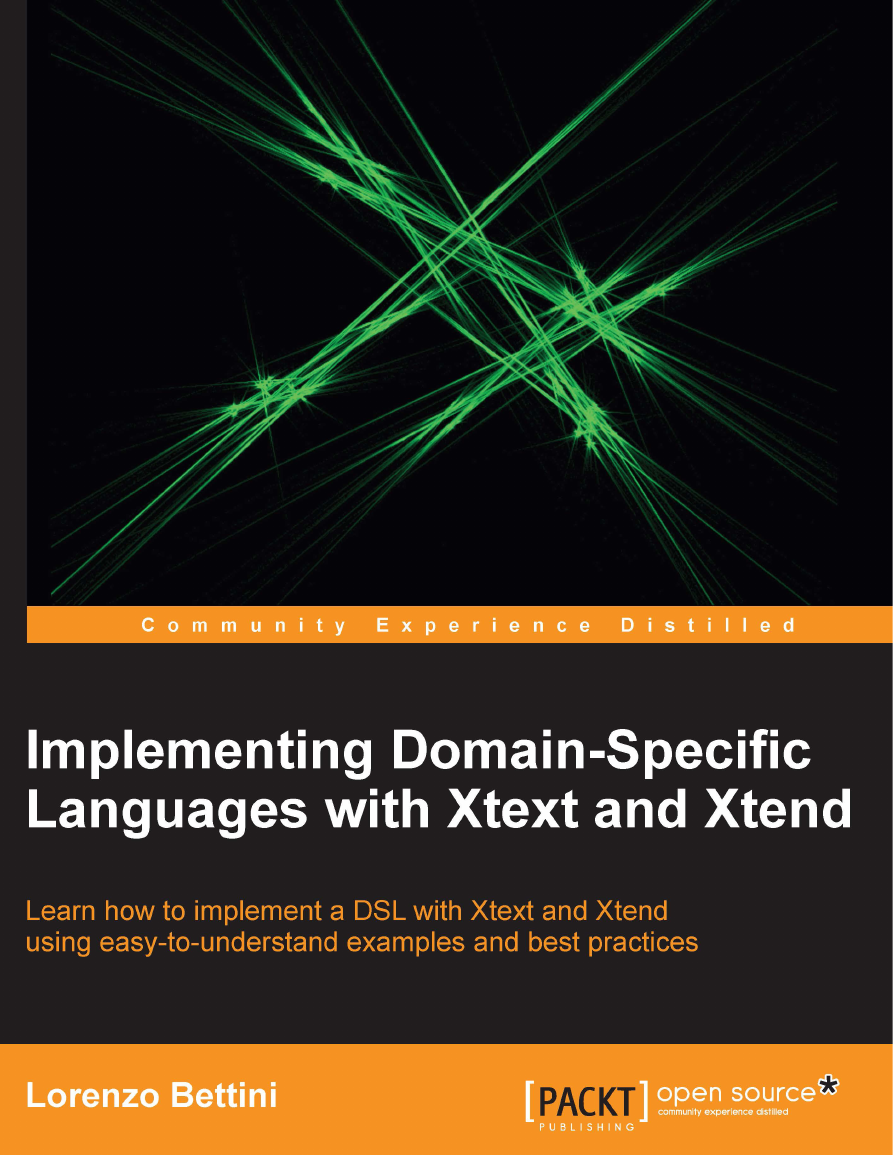
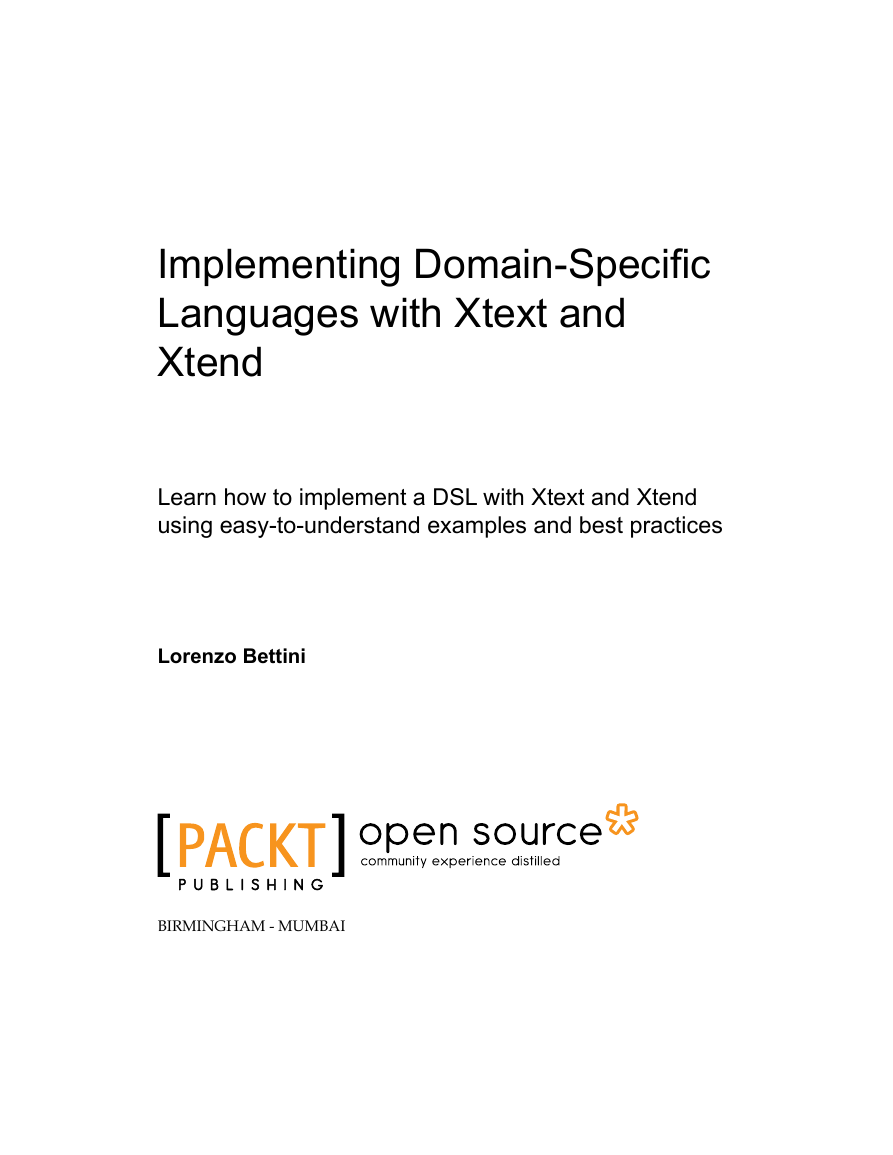
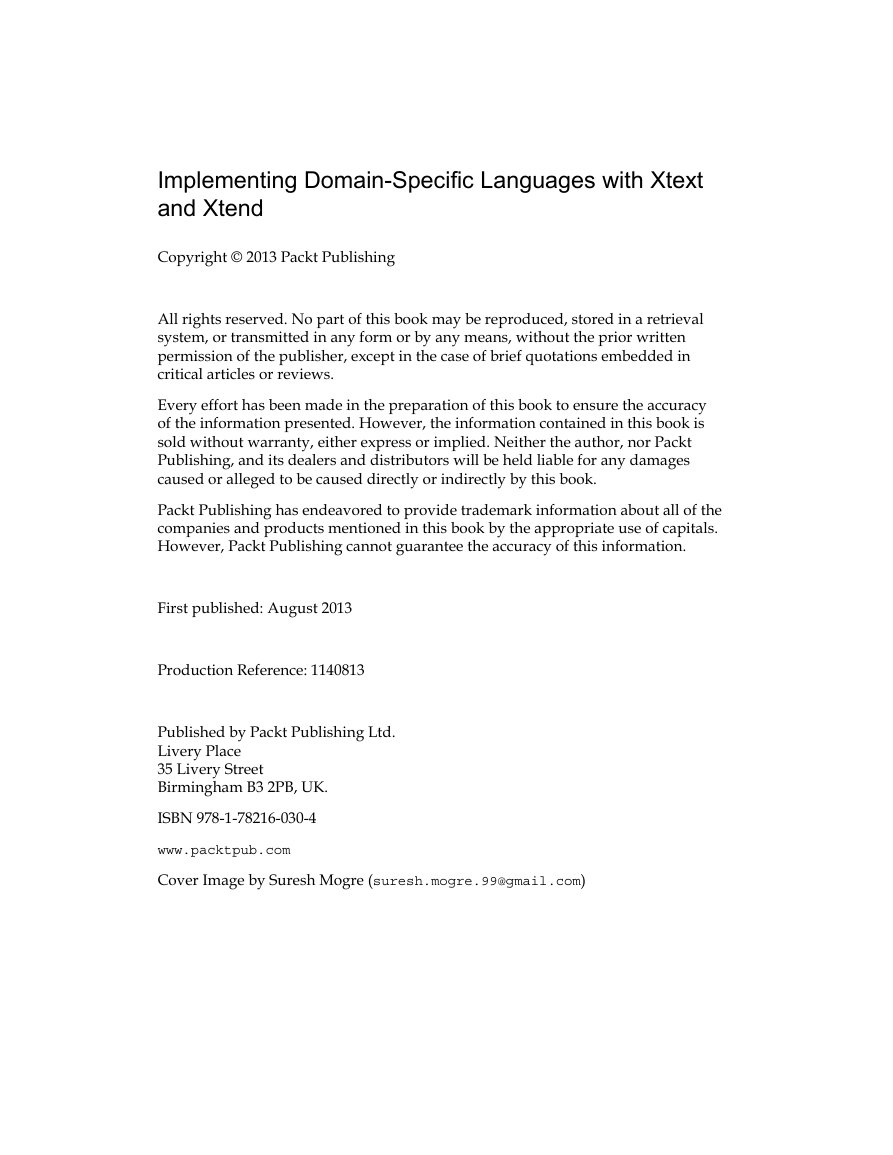

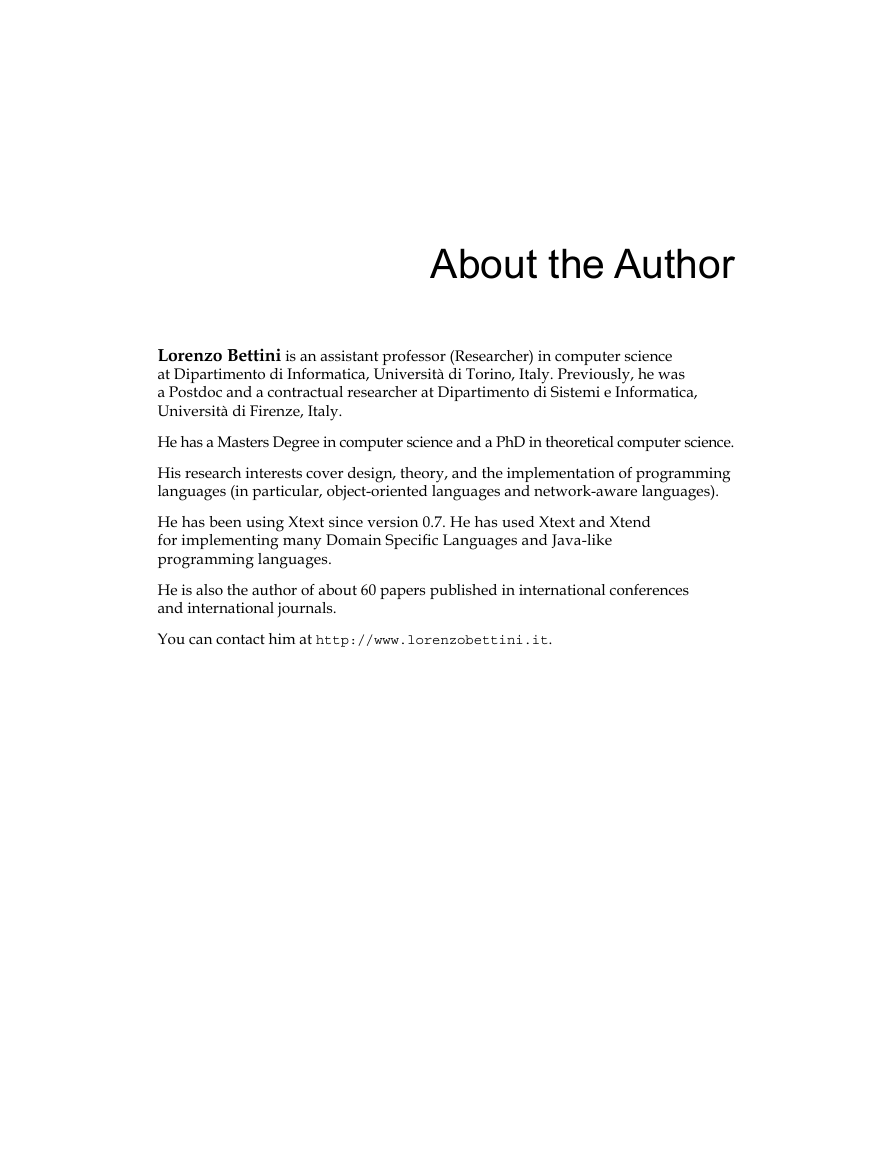
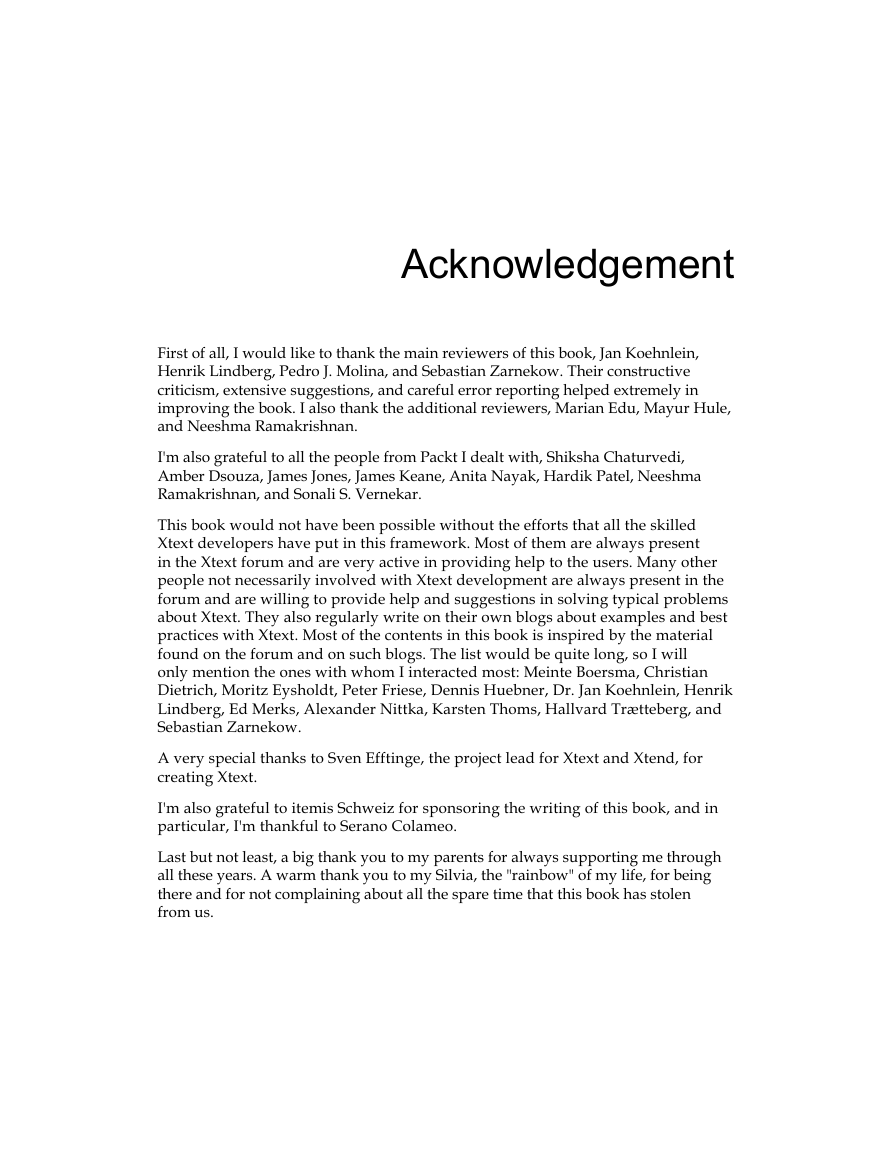
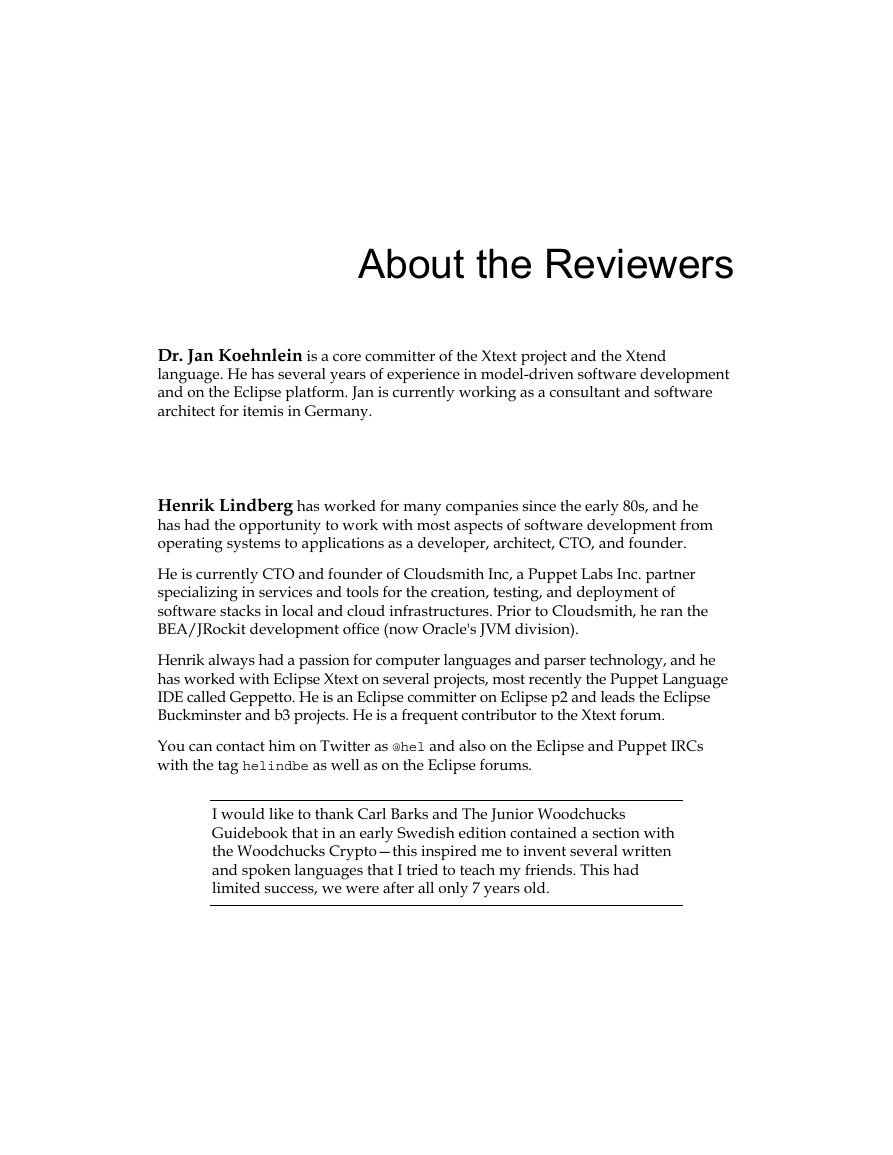
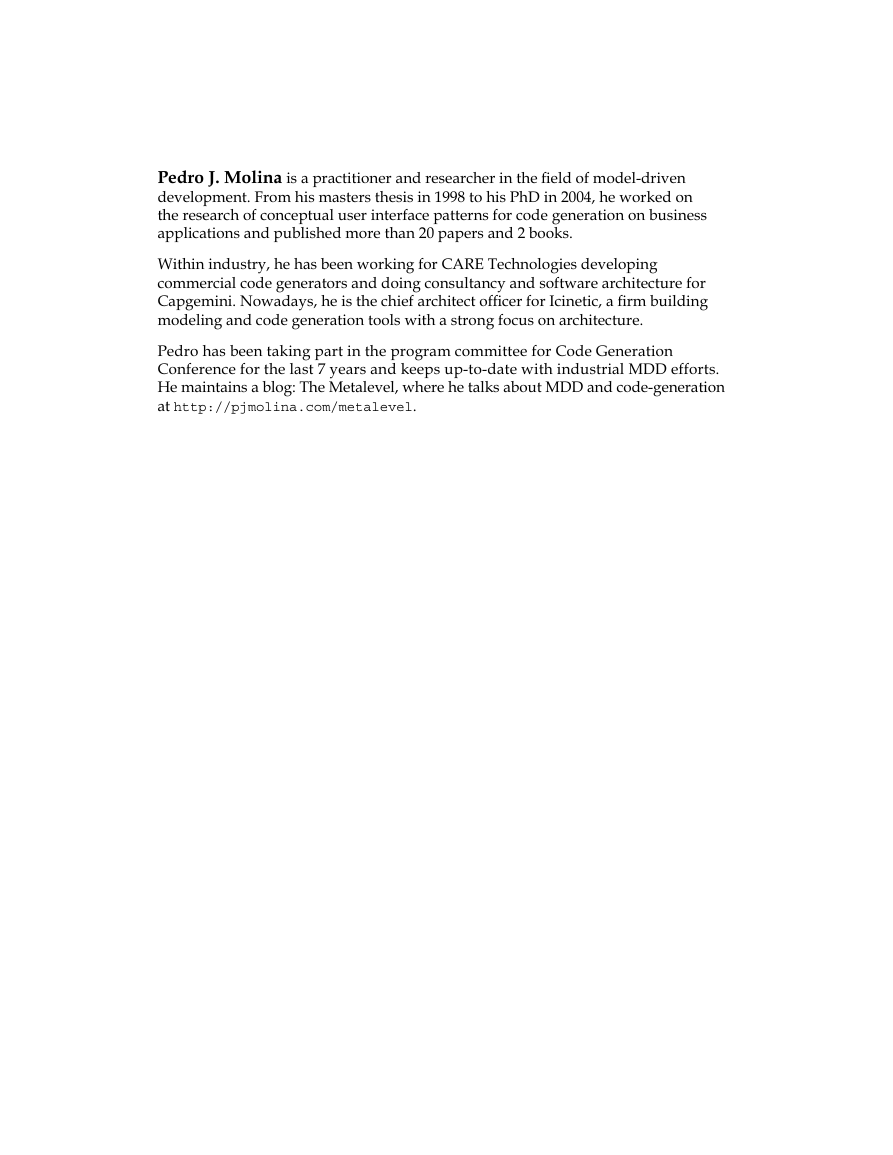








 2023年江西萍乡中考道德与法治真题及答案.doc
2023年江西萍乡中考道德与法治真题及答案.doc 2012年重庆南川中考生物真题及答案.doc
2012年重庆南川中考生物真题及答案.doc 2013年江西师范大学地理学综合及文艺理论基础考研真题.doc
2013年江西师范大学地理学综合及文艺理论基础考研真题.doc 2020年四川甘孜小升初语文真题及答案I卷.doc
2020年四川甘孜小升初语文真题及答案I卷.doc 2020年注册岩土工程师专业基础考试真题及答案.doc
2020年注册岩土工程师专业基础考试真题及答案.doc 2023-2024学年福建省厦门市九年级上学期数学月考试题及答案.doc
2023-2024学年福建省厦门市九年级上学期数学月考试题及答案.doc 2021-2022学年辽宁省沈阳市大东区九年级上学期语文期末试题及答案.doc
2021-2022学年辽宁省沈阳市大东区九年级上学期语文期末试题及答案.doc 2022-2023学年北京东城区初三第一学期物理期末试卷及答案.doc
2022-2023学年北京东城区初三第一学期物理期末试卷及答案.doc 2018上半年江西教师资格初中地理学科知识与教学能力真题及答案.doc
2018上半年江西教师资格初中地理学科知识与教学能力真题及答案.doc 2012年河北国家公务员申论考试真题及答案-省级.doc
2012年河北国家公务员申论考试真题及答案-省级.doc 2020-2021学年江苏省扬州市江都区邵樊片九年级上学期数学第一次质量检测试题及答案.doc
2020-2021学年江苏省扬州市江都区邵樊片九年级上学期数学第一次质量检测试题及答案.doc 2022下半年黑龙江教师资格证中学综合素质真题及答案.doc
2022下半年黑龙江教师资格证中学综合素质真题及答案.doc